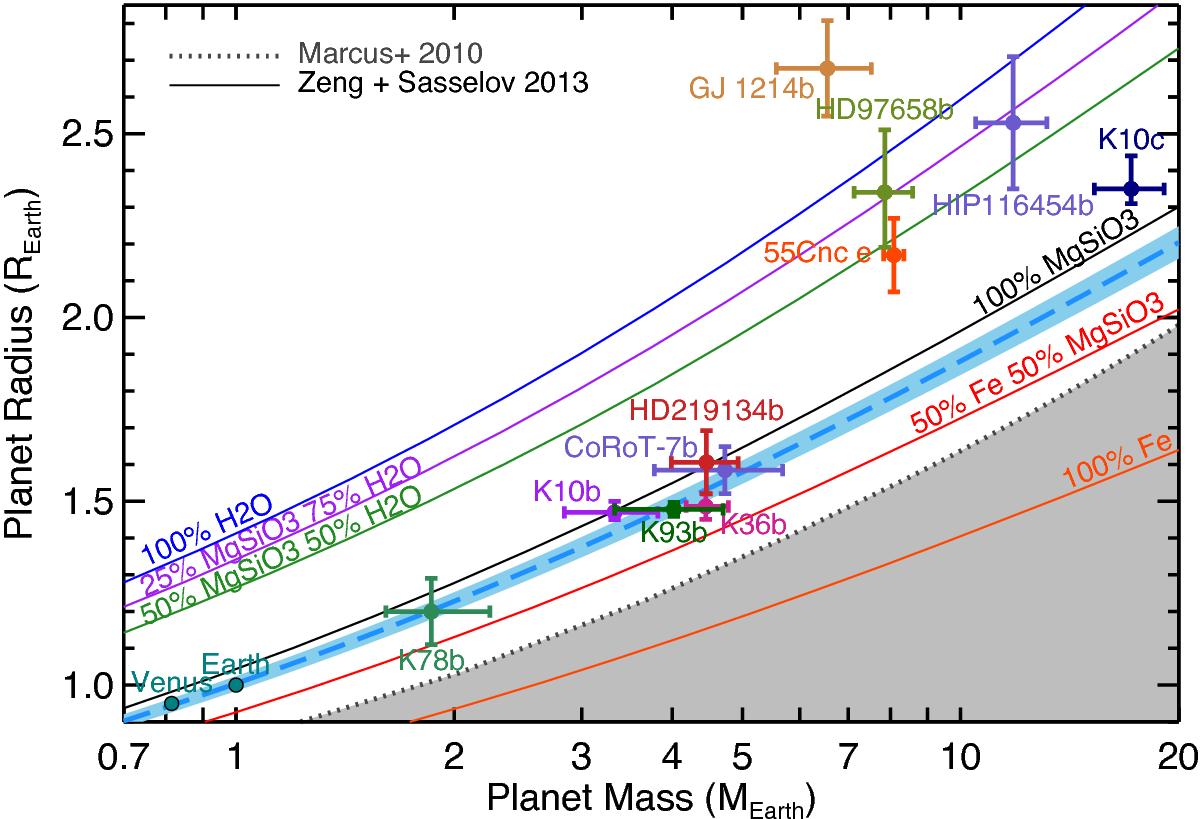Fig. 13

Mass-radius relation for planets with radii smaller than 2.7 R⊕ and with masses determined to a precision better than 20% (updated from Dressing et al. 2015). The shaded grey region in the lower right indicates planets with iron content exceeding the maximum value predicted from models of collisional stripping (Marcus et al. 2010) . The solid lines are theoretical mass-radius curves (Zeng & Sasselov 2013) for planets with compositions of 100% H2O (blue), 25% MgSiO3 – 75% H2O (purple), 50% MgSiO3 – 50% H2O (green), 100% MgSiO3 (black), 50% MgSiO3 – 50% Fe (red), and 100% Fe (orange). In this diagram, the position of HD 219134 b is almost overlapping the point for CoRoT-7 b. It belongs to a group of planets including Kepler-36 b, Kepler-93 b, and Kepler-10 b.
Current usage metrics show cumulative count of Article Views (full-text article views including HTML views, PDF and ePub downloads, according to the available data) and Abstracts Views on Vision4Press platform.
Data correspond to usage on the plateform after 2015. The current usage metrics is available 48-96 hours after online publication and is updated daily on week days.
Initial download of the metrics may take a while.


